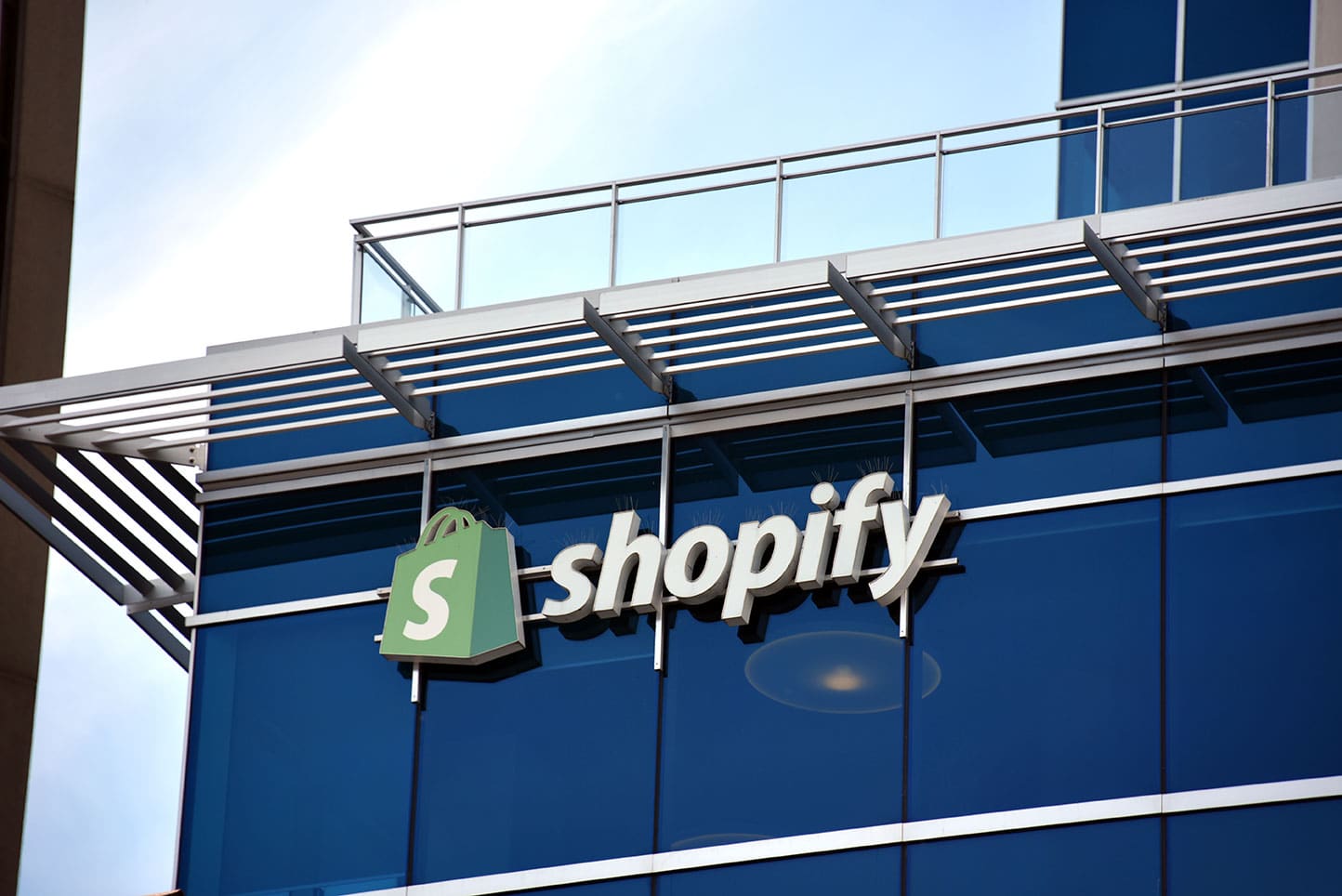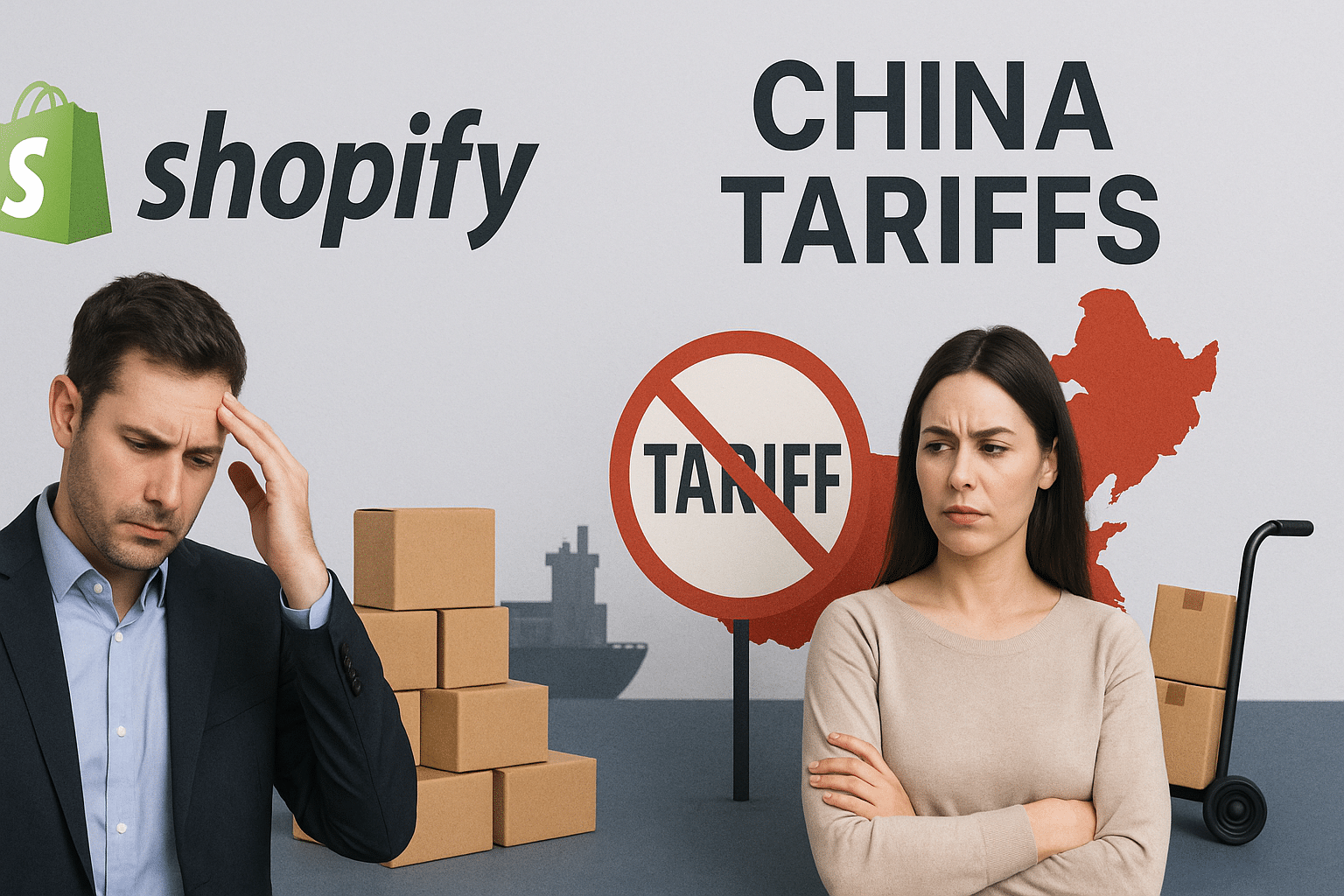ATB cuts price target on Shopify, citing tariff concerns

ATB Capital Markets is lowering its price target on Shopify (Shopify Stock Quote, Chart, News, Analysts, Financials TSX:SHOP) to $155.00 ahead of its Q1 results, citing ongoing uncertainty around U.S. tariffs on Chinese goods, which analysts warn could significantly impact the company’s merchant base and 2025 growth outlook.
ATB Capital Markets analyst Martin Toner, in a May 5 Earnings Preview, said that ongoing trade tensions and new U.S. tariffs, particularly those targeting imports from China, are creating uncertainty for markets and are expected to significantly impact Shopify’s business, especially its merchants that rely on Chinese goods. While Shopify has taken steps to help merchants manage these changes, ATB has lowered growth and revenue forecasts for 2025 and 2026. Other digital businesses like SaaS firms may be more insulated, while companies like Real Matters might actually benefit if economic pressure from tariffs prompts interest rate cuts. Despite these concerns, Shopify’s core long-term enterprise and international expansion strategy remains intact.
“We lowered our 2025e and 2026e GMV estimates by 5% each, respectively, with total revenue lowered by 1.5% and 1.1% for each year, respectively. For 2025e, we reduced our subscription solutions revenue estimate by 2.2% and merchant solutions revenue estimate by 1.5%,” Toner said. “As a result, our 2025e FCF margin estimate drops to 100bp to 17.8%, which is impacted by SHOP’s relatively large fixed operating cost base (which we think could take SHOP some time to trim in the event of a sudden GMV decline). We now expect 2025e GMV growth of 16% (from 18% prior), vs. current consensus expectations of 22.5% growth. As a result of our lower estimates, we reduce our DCF-based PT to $155.00 (from $170.00).
ATB is keeping its “Sector Perform” rating on the stock.
“Our discounted terminal value of $101.8-billion represents 75.0% of total enterprise value (EV) of $135.8-billion, as well as a 15.7x EV/EBITDA multiple, and a 5.0x EV/Revenue multiple.”
Economic uncertainty fueled by trade war threats has triggered a sharp sell-off in broader equities, especially growth stocks, over the past month, according to ATB
The S&P 500 is down about 8% from its February high, while the Nasdaq has fallen roughly 11%. The sell-off accelerated on April 3 after President Trump unveiled new tariff policies, including retaliatory tariffs of up to 50% on various countries and a minimum 10% universal tariff on all imports, excluding USMCA goods that meet specific rules of origin.
“In recent weeks, following a spat of tariffs implemented on China (up to 145% at one point), the Trump administration has seemed to take its foot off the pedal somewhat,” Toner said. “Markets have thus far seen a strong bounce from the early April lows, as retaliatory tariffs on most nations have been materially reduced with the Trump administration now appearing to be coming to the negotiating table.”
Though the near- and long-term direction of tariff policies remains uncertain, Toner believes a permanent tariff regime could have different impacts across the industries ATB covers.
“Within our coverage, we think e-commerce names (SHOP specifically) would be most directly impacted by tariffs,” he said. “We estimate that 20% of SHOP’s 2025e GMV is directly exposed to U.S. merchants sourcing Chinese goods. Thus, the prospective tariffs on Chinese imports plus the removal of de-minimis exception introduces a real challenge for Shopify’s merchants. There remains uncertainty in the stock (still down 25% from its February high, and was down 45% at the trough), and SHOP now trades at 10.9x NTM P/S, relative to a peak of nearly 15x sales in February.”
Toner said that for pure-play SaaS names like KXS, DCBO, and BLN, ATB sees these businesses as largely shielded from tariffs due to their products’ digital, rather than physical, nature.
“The risks for SaaS names specifically lie in budget/spending cuts on behalf of their enterprise customers and delays in additional expenditures,” Toner said. “Names like REAL, meanwhile, could benefit indirectly from macro policies changes that could be induced by the tariffs. REAL is inversely correlated to mortgage rates and the 10-year yield since the business is driven by refinance mortgage volumes. Ultimately, we think tariffs could introduce additional incentive for central banks to cut rates (in the face of economic uncertainty), which we think could provide a tailwind for REAL.”
On April 3, President Trump signed an executive order ending duty-free treatment for goods from China and Hong Kong under the de minimis rule, effective May 2. Postal shipments will now face a 30% tariff or $25 per item, rising to $50 after June 1, while non-postal goods will be subject to all applicable tariffs, which currently range from about 50% to 65%.
“We believe this change will have a material near-term impact on Shopify’s business,” Toner said. “The stock fell 45% from its February peak to April trough, though has bounced on news that the Trump admin is walking back, the gravity of China tariffs (recent reports suggest that the Administration will bring down the tariff rate to 50%-65% for now, from 145% prior).
“It does appear that the US will at some point be entering negotiations with China, though for now, there does not appear to be any movement on the de minimis exemption.”
ATB estimates that about 20% of Shopify’s projected 2025 GMV is tied to U.S. merchants sourcing goods from China. While uncertainty remains around the stock, ATB believes Shopify could benefit from any positive developments in U.S.–China trade talks.
Shopify now trades at 10.9 times next-twelve-month sales, down from a peak of nearly 15 times in February and roughly in line with its average valuation of 10.8 times since early 2024.
“Even if the current policies remain in place, any material negative impact on SHOP’s GMV could only be temporary, as suppliers will likely shift production to other geographies over time to circumvent the tariffs,” Toner said. “In addition, SHOP’s management has taken proactive steps (i.e., introducing new features at checkout) to help merchants navigate this environment.”
Shopify reported strong growth last quarter, with gross merchandise volume (GMV) reaching $94.5-billion, up about 26% year over year, outpacing the 24% growth seen in Q3 2024. GMV has increased in three of the past five quarters, driven by rising adoption among major brands and consistent sales from existing merchants. The company continues to generate healthy free cash flow, posting a 22% margin last quarter, and expects Q1 margins to land in the mid-teens, close to the 17% market consensus. Q1 2025 will mark Shopify’s seventh straight quarter with double-digit free cash flow margins. Stock-based compensation is projected at $120-million.
“We note that management is currently focused on growth, with 2025 FCF margins expected to be flat as the Company still sees plenty of growth opportunities and is willing to sacrifice some margin in the near-term while continuing to grow revenues at a 20+% rate,” Toner said.
According to Toner, Shopify is making headway with large enterprise customers, which have more influence over pricing and margins but also represent a significant opportunity to boost overall sales volume. While these clients currently comprise a small portion of Shopify’s GMV, ATB believes that enterprise, B2B and offline retail customers could help extend the company’s long-term growth. They’re keeping a close eye on whether enterprise adoption starts to play a bigger role in driving GMV.
ATB said it will closely watch Shopify’s Q1 2025 results, due May 8 before the market opens, with a conference call at 8:30 a.m. ET. The firm expects management’s updated guidance to take center stage, particularly in light of tariff uncertainty.
Since the Trump administration’s announcements, consensus estimates have dipped slightly due to limited visibility on the potential impact on GMV. Last quarter, Shopify guided to a 2025 free cash flow margin of about 17.5%, and ATB estimated 18% GMV growth. With Shopify already rolling out merchant support tools, like tariff calculators, fulfillment strategies and supply chain guidance, ATB wants to see how those efforts soften the blow.
ATB is also looking for clues about the health of Shopify’s subscription solutions business. If merchants reliant on Chinese goods exit the platform, that could dent long-term growth. While merchant solutions revenue is more exposed, subscription revenue could also take a hit.
Progress in enterprise sales is another focus. Shopify continues to tout its edge over incumbents, especially in Europe and has ramped up go-to-market strategies that target large businesses. While enterprise still makes up a small part of GMV, ATB sees long-term potential in a “land and expand” model.
“We now expect Q2/25 GMV growth of 20.0% versus expectations of 23% and revenue growth of 22.0% (consensus of 25.2%),” Toner said. “We forecast FCF margins of 13%, 17% and 19%, Q2/25-Q4/25, as Shopify quickly adjusts to the negative impact of tariffs. We expect operating expense as a percentage of revenue to be 40.5%.”
-30-

Rod Weatherbie
Writer
Rod Weatherbie is a journalist based in Prince Edward Island. Since 2004, he has written extensively about the Canadian property and casualty insurance landscape. He was also a founder and contributing editor for a Toronto-based arts website and a PEI-based food magazine. His fiction and poetry have been featured in The Fiddlehead, The Antigonish Review, and Juniper.


